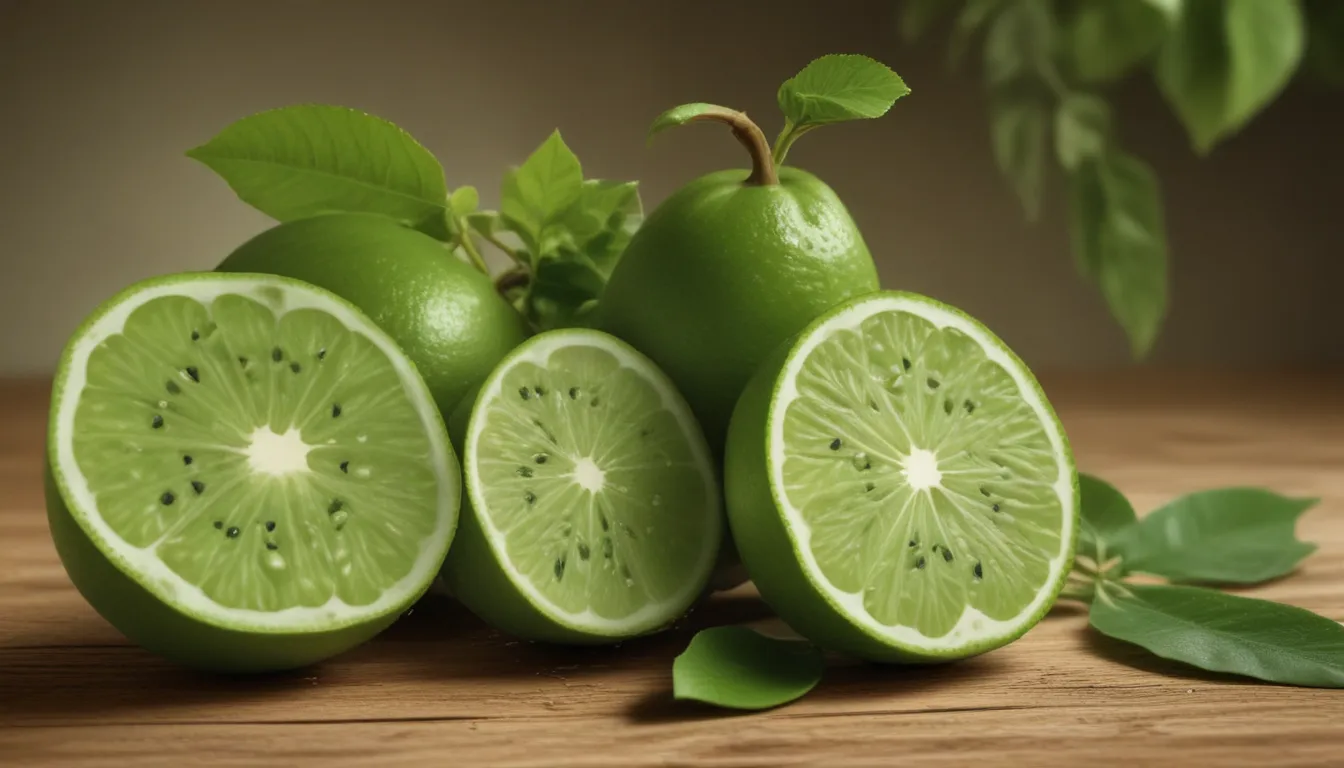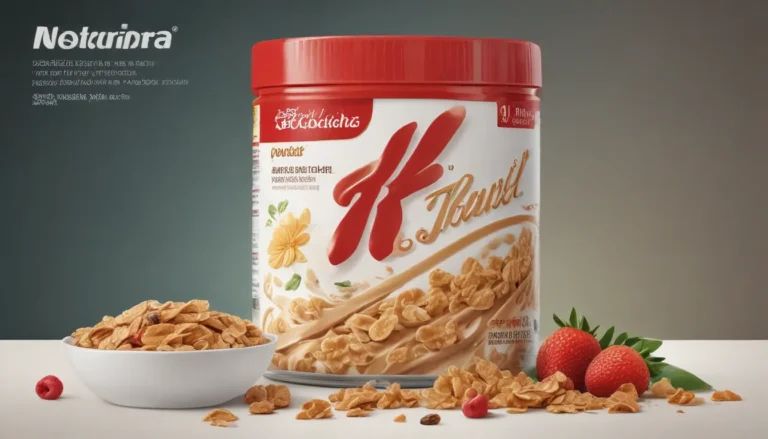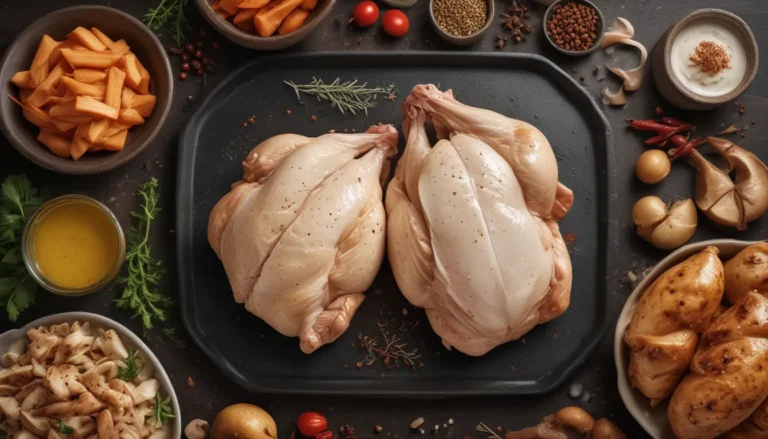The pictures in our articles might not always show exactly what the text is talking about. We use these images to make the article more interesting and eye-catching. They are there to add to the text, but not to replace it or show every detail.
Are you ready to embark on a culinary journey filled with tangy bursts of flavor and unique textures? Look no further than fingerlime, also known as "citrus caviar," a delightful fruit native to Australia that has captured the hearts of chefs and food enthusiasts worldwide. In this article, we'll delve into 14 fascinating facts about fingerlime that will ignite your curiosity and leave you eager to experience this extraordinary fruit for yourself.
Unveiling the Secrets of Fingerlime
-
Origins and Appearance: Fingerlime, a small, elongated fruit in vibrant colors like green, red, and black, is native to Australia.
-
Distinct Texture: Cutting open a fingerlime reveals tiny juice vesicles resembling pearls, giving it a visually pleasing and texturally unique appeal.
-
Flavor Explosion: With a tangy, citrusy taste ranging from sweet to slightly acidic, fingerlime adds a burst of freshness to a variety of dishes.
-
Versatile in the Kitchen: Its unique texture and flavor make fingerlime a versatile ingredient, perfect for garnishing salads, desserts, seafood dishes, and cocktails.
-
Nutritional Benefits: Rich in Vitamin C, potassium, and antioxidants, fingerlime boosts immunity and promotes overall well-being.
Growing and Caring for Fingerlime Trees
-
Slow Growth: Fingerlime trees are slow-growing but adaptable to various climatic conditions, thriving in both tropical and subtropical regions.
-
Low Maintenance: Compared to other citrus trees, fingerlime trees are relatively low maintenance, requiring minimal pruning and tolerating a wide range of soil types.
-
Indigenous Remedies: Indigenous Australian communities have long used fingerlime for its antimicrobial and anti-inflammatory properties, including using its juice as a traditional remedy for sore throats and colds.
Culinary Delights with Fingerlime
-
Exotic Appeal: Chefs and food enthusiasts adore fingerlime for its exotic touch, enhancing both simple fruit salads and gourmet seafood dishes.
-
Global Demand: Fingerlime's distinct taste and texture have captivated international markets, leading to a surge in popularity among chefs and home cooks worldwide.
-
Environmental Sustainability: As a native plant with low water and fertilizer requirements, fingerlime is an environmentally friendly crop choice.
-
Varietal Adventure: Explore the diverse fingerlime varieties, from vibrant Green Sapphires to deep purple Blood Limes, for an exciting culinary experience.
-
Australian Culinary Tradition: Fingerlime is a staple ingredient in traditional Indigenous and contemporary Australian cuisine, featured in stir-fries, sauces, jams, and desserts.
Harvesting and Enjoying Fingerlime
-
Optimal Cultivation: Cultivating fingerlime requires specific techniques to ensure optimal growth and fruit production, with fruits typically hand-harvested at peak flavor.
-
Health Benefits: Fingerlime's high vitamin C content boosts immunity, while antioxidants help fight free radicals, promoting heart health and digestion.
-
Easy Access: Whether in specialty stores, farmers' markets, or online, fingerlime is readily available for culinary enthusiasts to explore.
-
Storage Tips: Store fingerlime in the refrigerator for up to two weeks, but for optimal freshness, enjoy within a few days of purchase.
Time to Indulge in Fingerlime
Embark on a flavorful exploration with fingerlime, the citrus caviar that promises a sensory adventure like no other. From its exquisite appearance to its nourishing benefits, this Australian gem is a culinary delight waiting to be discovered. Whether you're crafting a refreshing cocktail or adding a tangy garnish to a savory dish, fingerlime's versatility knows no bounds. Embrace the vibrant world of fingerlime and savor every tangy burst of citrus goodness it brings to your plate.
Frequently Asked Questions
-
What is fingerlime? Fingerlime, or citrus caviar, is a native Australian fruit with a tangy, citrusy taste and a unique appearance resembling small pearls.
-
How do you eat fingerlime? Simply slice open a fingerlime lengthwise, gently squeeze the fruit to release the citrus-filled pearls, and enjoy them as is or as a garnish in your dishes.
-
Where can I find fingerlime? Look for fingerlime in specialty stores, farmers' markets, and online sources, or consider growing your own in a suitable climate.
-
What dishes can fingerlime be used in? Use fingerlime in salads, seafood recipes, cocktails, desserts, and savory dishes to add a tangy burst of flavor and a visual appeal.
-
Are there health benefits to eating fingerlime? Yes, fingerlime is a nutritious fruit rich in vitamin C, antioxidants, potassium, fiber, and folate, which support immunity, heart health, and digestion.
-
Can fingerlime be grown at home? Yes, fingerlime can thrive in subtropical or Mediterranean climates with well-draining soil and full sun exposure, making it a rewarding addition to home gardens.
-
How long does fingerlime last? When stored correctly in the refrigerator, fingerlime can remain fresh for up to two weeks, with peak flavor best enjoyed within a few days of purchase.
-
Are there different varieties of fingerlime? Yes, explore unique fingerlime varieties like Red Champagne, Green Sceptor, and Pink Ice, each offering its own distinct color, shape, and flavor profile.
Dive into the extraordinary world of fingerlime and let its tantalizing flavors and textures captivate your senses. Whether you're a seasoned fruit enthusiast or a curious culinary explorer, fingerlime promises a delightful experience that will elevate your dishes to new heights. Embrace the citrusy charm of fingerlime and infuse your kitchen creations with the essence of this remarkable Australian fruit.






